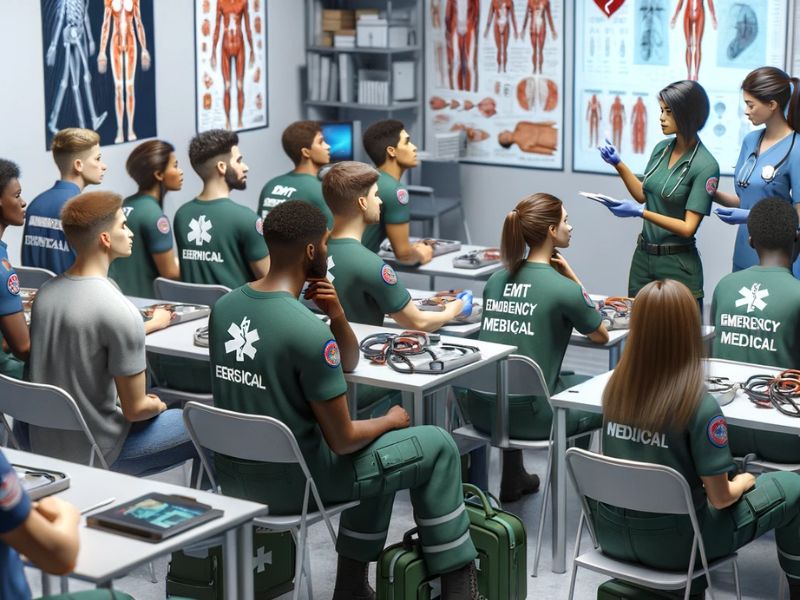
Training in emergency medicine: a vital pathway
Exploring the Levels and Components of EMT Training
The Importance of EMT Training
Training to become an Emergency Medical Technician (EMT) plays a crucial role in the healthcare landscape, serving as the first link in a vital chain of rescue. EMTs are not only the first responders in emergency situations but also responsible for quick assessments and initial first aid interventions, which can often make the difference between life and death. EMT training provides the necessary skills to handle a wide range of emergency situations, from traumatic injuries to heart attacks, and from assisting in emergency childbirth to managing patients in a state of shock. This training path not only teaches basic techniques such as cardiopulmonary resuscitation (CPR) and wound management but also emphasizes the importance of effective communication with patients and other healthcare professionals, as well as accurate documentation of interventions performed.
Components and Levels of Training
EMT training is structured to provide a comprehensive understanding of emergency medicine. It begins with classroom-based theoretical lessons, where students learn the fundamental principles of medical assistance, including human anatomy and physiology, patient assessment techniques, and the recognition and management of various medical and traumatic conditions. Practical laboratories allow students to put this knowledge into practice, training in procedures such as intubation, applying bandages and splints, and resuscitation techniques. Clinical rotations in hospitals and outpatient services offer students the opportunity to observe and actively participate in patient treatment under supervision. Finally, field internships, often conducted in ambulances, allow students to experience the reality of EMT work, responding to real emergency calls and applying what they have learned in real-life situations. Each level of EMT training – Basic, Advanced, and Paramedic – builds upon the previous one, adding more knowledge and skills.
Certification and Career Opportunities
After completing the training program, EMT candidates must pass a certification exam, such as the National Registry of Emergency Medical Technicians (NREMT) exam. This exam assesses the theoretical and practical skills acquired during training. In many states, NREMT certification is followed by a state license, which may have additional requirements. Continuing education is a vital aspect of an EMT’s career, with periodic update courses required to maintain certification. These courses keep EMTs up to date with the latest practices and technologies in the field of emergency medicine. Once certified, EMTs can pursue a career in various fields, including ambulance services, fire departments, hospitals, and disaster relief organizations. Furthermore, with additional training and certifications, EMTs can advance to more advanced roles, such as paramedics, emergency room technicians, or specialize in specific areas such as disaster response.
Choosing the Right Training Program
Choosing the right EMT training program is a crucial step. It is essential to consider the program’s accreditation, ensuring that the training meets national quality standards. The curriculum should offer a balanced mix of theory and practice, including laboratories, clinical rotations, and field internships. Instructors should have direct experience in the field of emergency medicine, enabling them to provide students with a realistic and practical perspective. Facilities should be equipped with modern equipment and realistic simulations, which are crucial for effective learning. Some programs also offer job placement assistance services, helping graduates find their first positions in the field of emergency medicine. Additional considerations include financial assistance, benefits for responders, and accommodation options for out-of-town students.
EMT training is a commitment dedicated to saving lives and serving communities. With its combination of rigorous theoretical learning and practical field training, it prepares students to face the unpredictable world of emergency medical care. With the increasing demand for qualified EMTs, quality training becomes even more essential, shaping the lifesavers of tomorrow.


